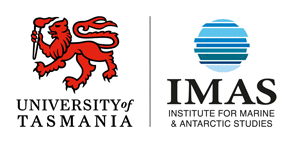
The full Progress Report can be found here.
EXECUTIVE SUMMARY
This report provides an update on the status of dissolved oxygen and benthic conditions in Macquarie Harbour. It follows on from the results reported in the IMAS report released in January 2017 which described the deterioration of benthic and water column conditions in Macquarie Harbour in spring 2016. This report presents the results and preliminary interpretation of oxygen monitoring data upuntil the end of March 2017, and a repeat survey of benthic communities in January/February 2017. This ongoing work forms part of a research project (FRDC Project 2016-067: Understanding oxygen dynamics and the importance for benthic recovery in Macquarie Harbour to address these needs) funded by the Fisheries Research Development Corporation with the support of both industry and government (EPA and DPIPWE).
Dissolved oxygen conditions in the middle and bottom waters remained extremely low in late 2016 before a replenishment of oxygen was seen in the deep bottom waters at the Strahan monitoring site in early December 2016, with the effects being observed at the Table Head Central and Franklin monitoring sites soon after. The increase in bottom water DO levels at the Strahan and Franklin monitoring sites primarily occurred in waters below 30m with little change observed in DO levels between 20 and 30m depth. Although these observations are encouraging, and may help explain some of the benthic observations noted by the companies in March and April, it is important to recognise that an increase was observed in bottom water DO concentrations in early 2016 and concentrations still declined to extremely low levels six months later. DO levels in the middle of the water column remain low, and this mid-water region represents a much larger proportion of the total water volume in the harbour, thus there is still clearly capacity for the DO levels in bottom waters to decline.
Patterns in the abundance and number of species of benthic fauna in January 2017 remained largely unchanged from the October 2016 survey, with the exception of lease 3 where there was a further decline. Lease 5 in the north of the harbour was sampled for the first time and there were distinct differences in the fauna observed from each of the two transects. Faunal abundance and species numbers were greater on the shallower southeast transect compared to deeper transect that ran to the northwest. The lower abundances and species number appear to reflect a spatial difference in the footprint of the farm, with a greater level of organic enrichment from the lease extending to the NW. We were provided with some additional data from Aquenal, a consultancy which undertook biological assessment consistent with IMAS protocols at a sixth lease for comparison. This lease is located in the same region of the harbour as lease 3 and has a similar farming history. Results suggest that there was more fauna found on this lease (which we have called lease 6) compared to lease 3. The survey of lease 6 was conducted 2 months after lease 3. It was noted that a number of the individuals in the lease 6 samples were small, which may be indicative of recent recruitment. The next benthic survey for this study(FRDC 2016/067) is scheduled for May/June 2017 and will provide the additional data necessary to provide a better understanding of both the magnitude and extent of any potential recovery.
The benthic survey undertaken in January included a more comprehensive set of external sites to provide a better understanding of the broader benthic ecology of the harbour at this time. When this data is contrasted against the harbour wide surveys undertaken prior to the decline in fauna observed in spring 2016 it appears that the greatest decline in abundance and species numbers has occurred in the deeper central region of the harbour, with relatively little change in the fauna in the shallower regions in the mid-harbour or to the north or south of the harbour.Although the abundance and diversity tends to suggest a depauperate community(akin to that observed pre-farming), when the functional nature of the fauna in this deeper central region is examined it is clear that it still reflects a community subject to organic enrichment. The next survey in May/June 2017 will further establish the magnitude and extent of potential recovery at both lease and external sites.
In this report we have also included some preliminary results and evaluation of the video assessments that were conducted in conjunction with the benthic sampling at all of the study sites for all 7 benthic surveys to date. This data demonstrates the association between the presence of Beggiatoa bacteria, Dorvilleid polychaetes and farming in the harbour. Beggiatoa was generally found around and extending fromthe cages, with 71 % of observations of Beggiatoa within 50m of the cage and 90% of observations within 100m. The surveys undertaken in October 2016 and January 2017 showed an increase in the prevalence of Beggiatoa around the leases relative to previous surveys. We have been advised that more recent surveys (submitted to EPA by companies in March and April) show a significant reduction in Beggiatoa around a number of the leases in March and April. This is consistent with the observed recharge of bottom water DO; as Beggiatoa occurs at the interface between anoxic/oxic conditions it is to be expected that the levels of Beggiatoa might reduce whenbottom water oxygen conditions improve.
It is important to keep in mind that DO levels appeared to be the major determinantof the deterioration in benthic condition witnessed in spring 2016, and while levels are currently higher, they are not dissimilar to the levels observed this time last year with mid water DO levels remaining low.
The information provided by this project will help inform both the operational management of farming activities and the long-term sustainable management of the harbour. Accordingly, additional update reports will be provided regularly throughout the project.